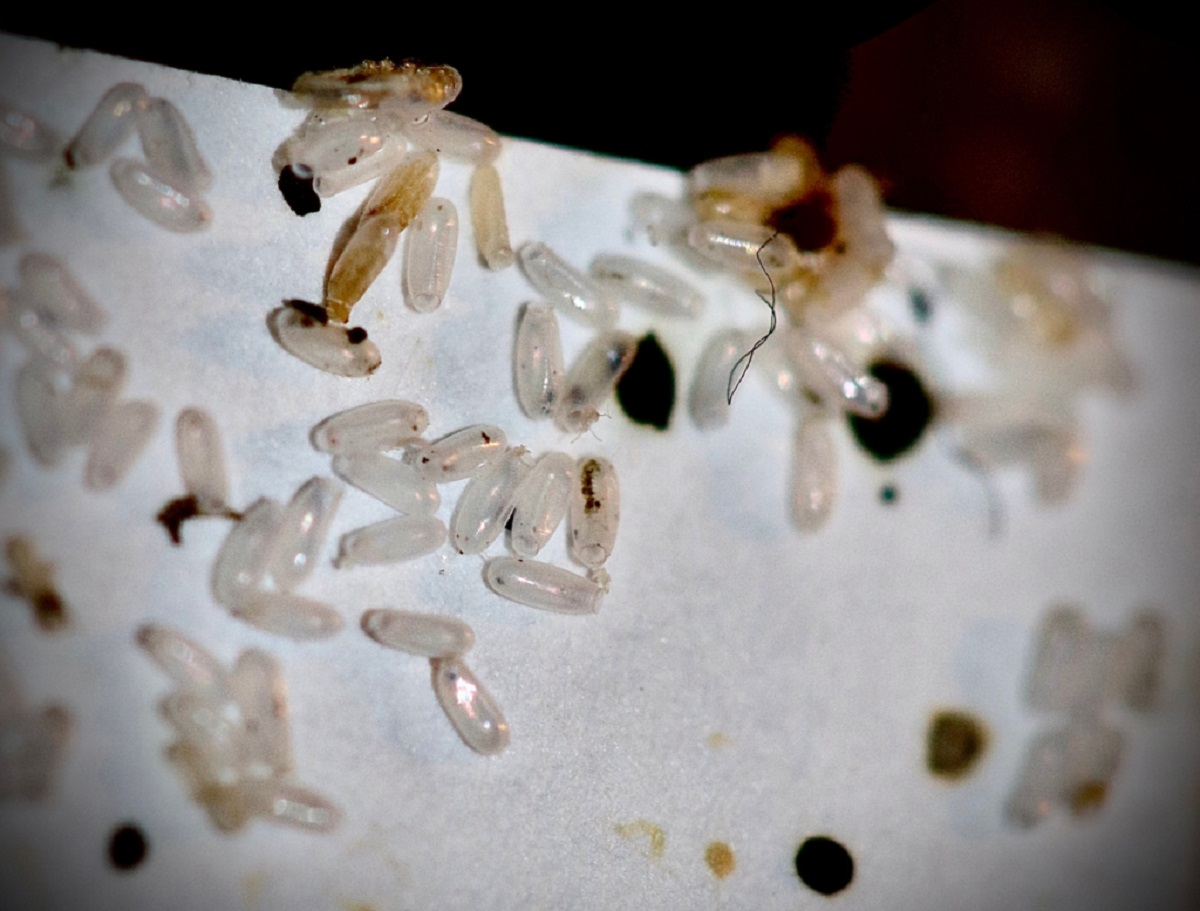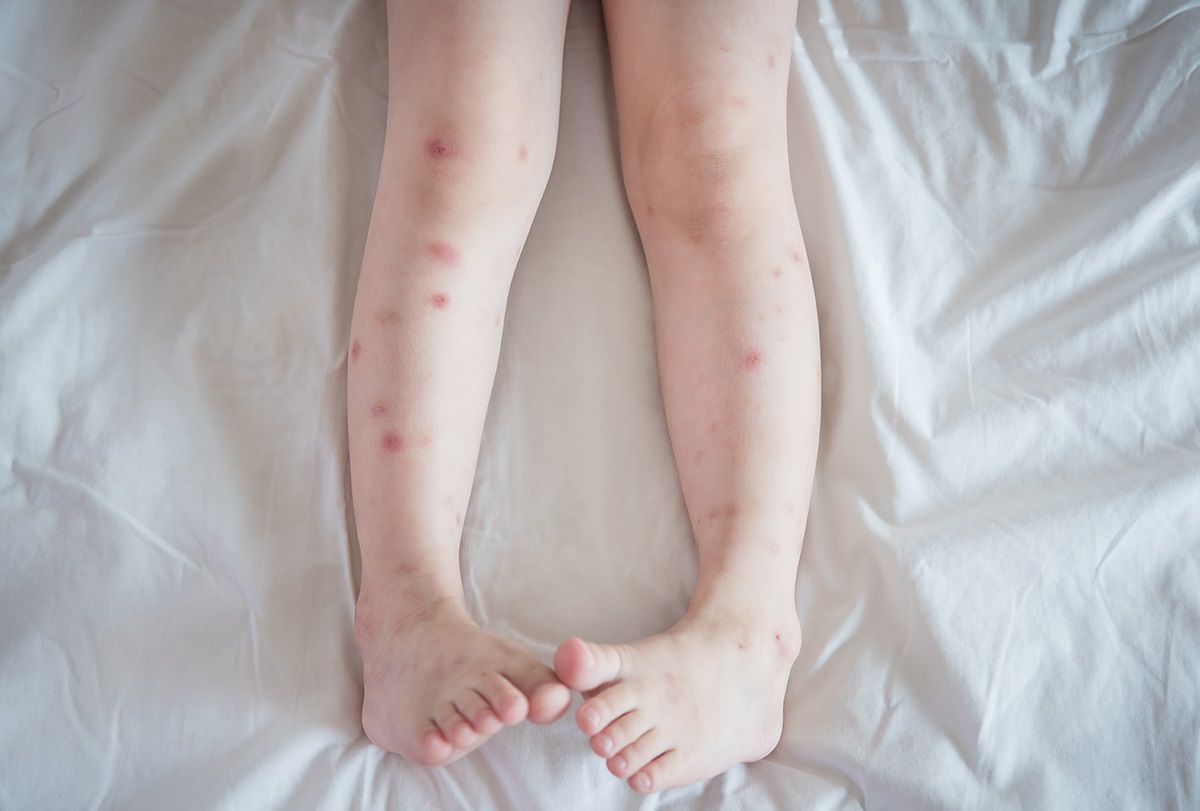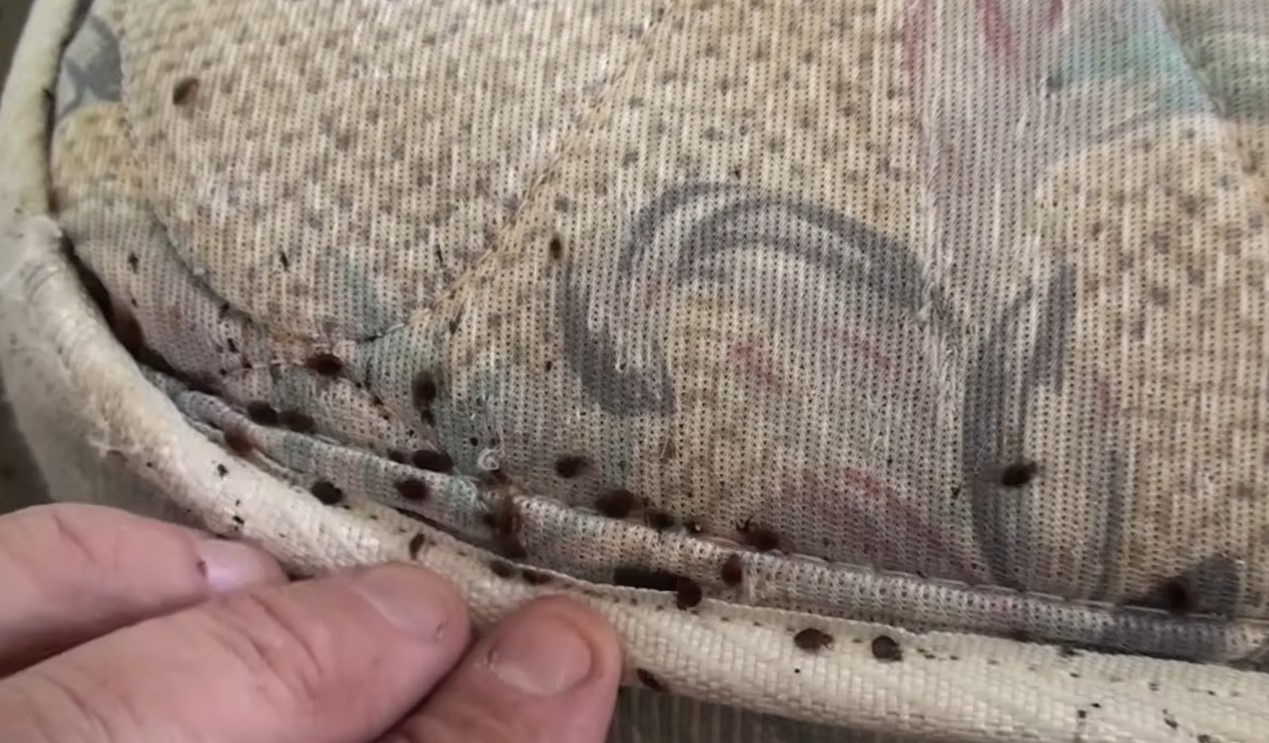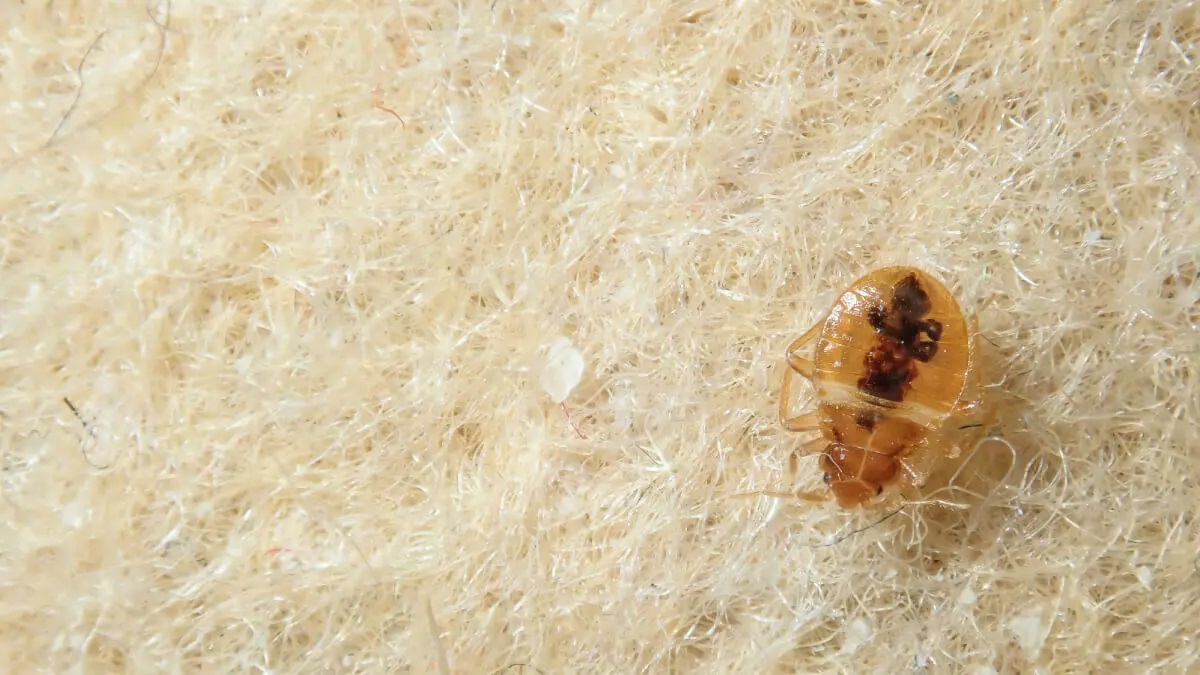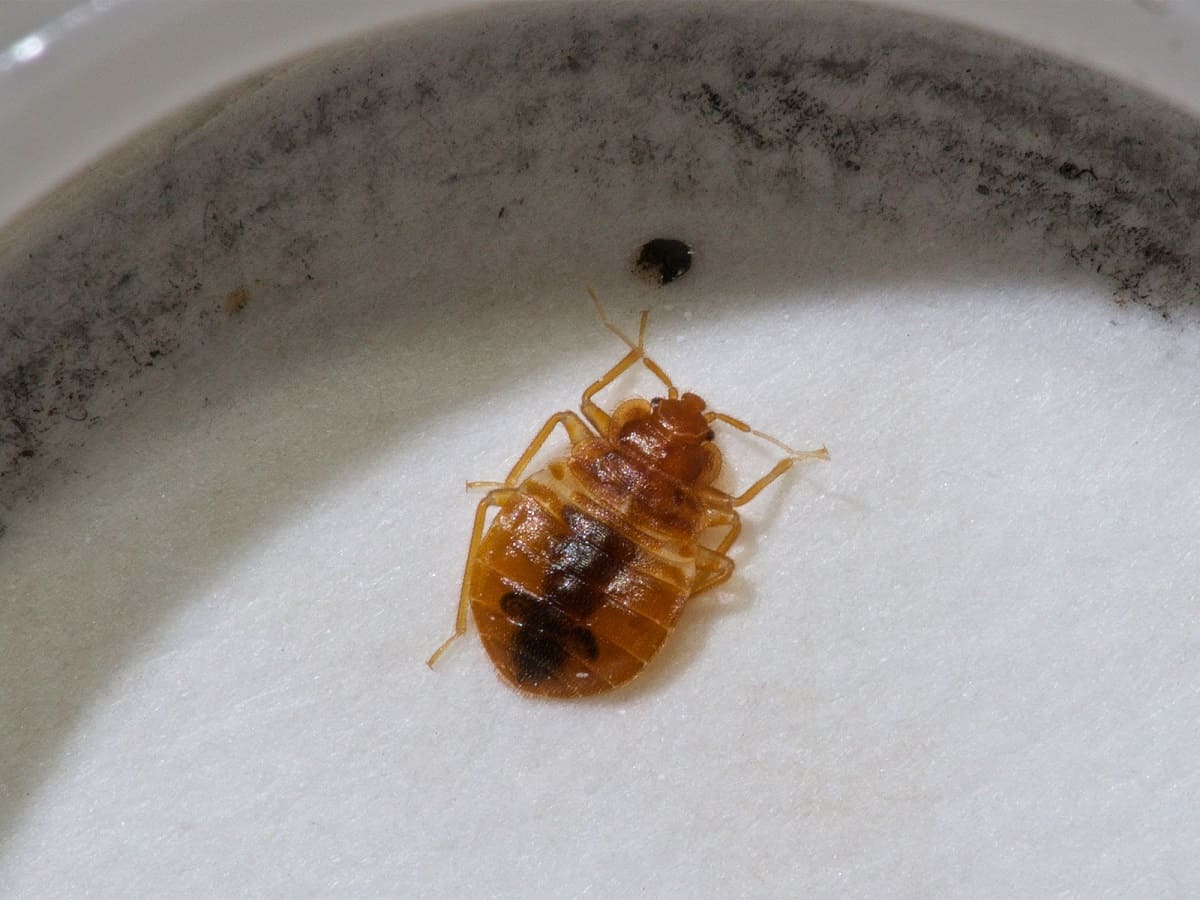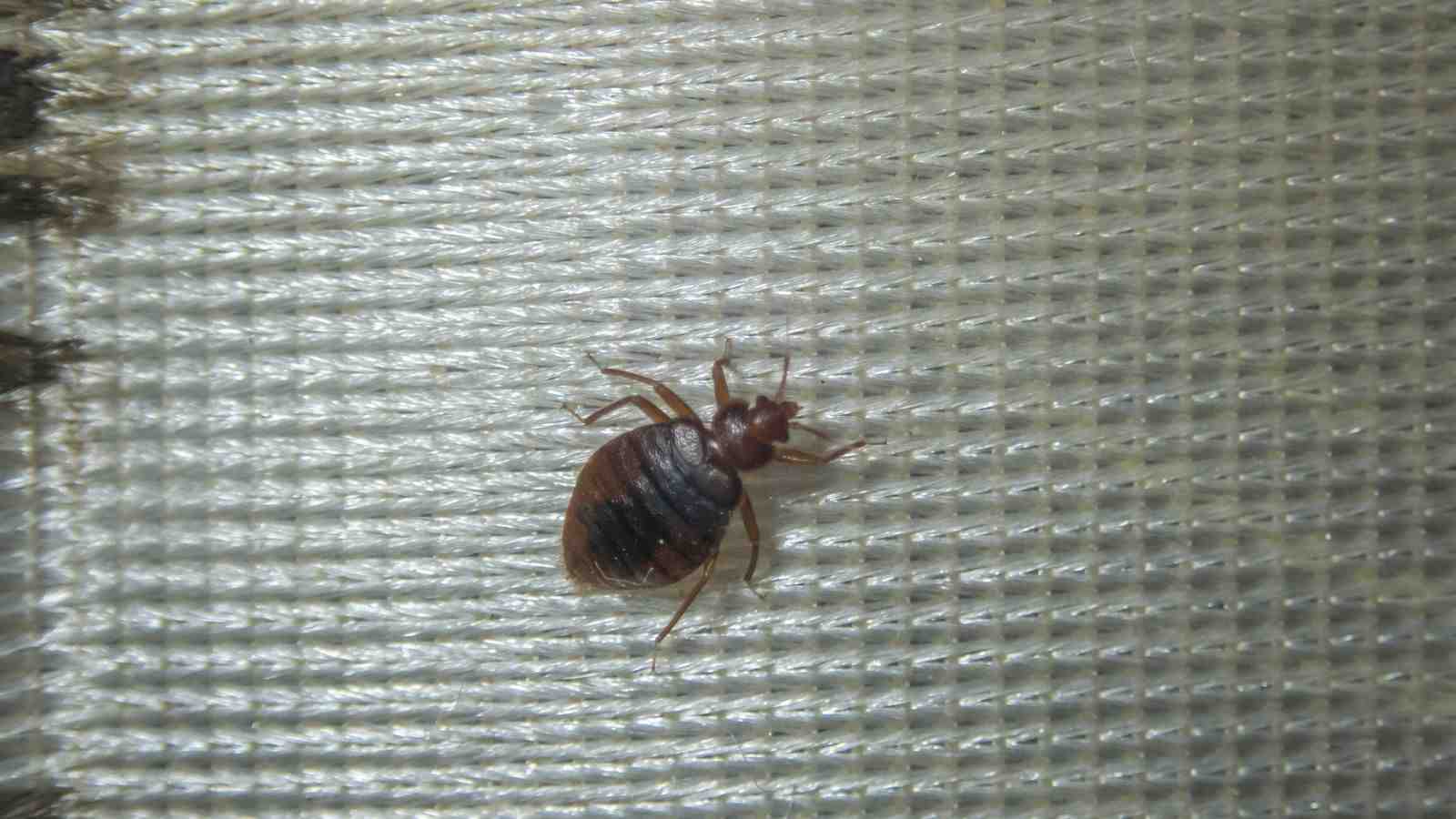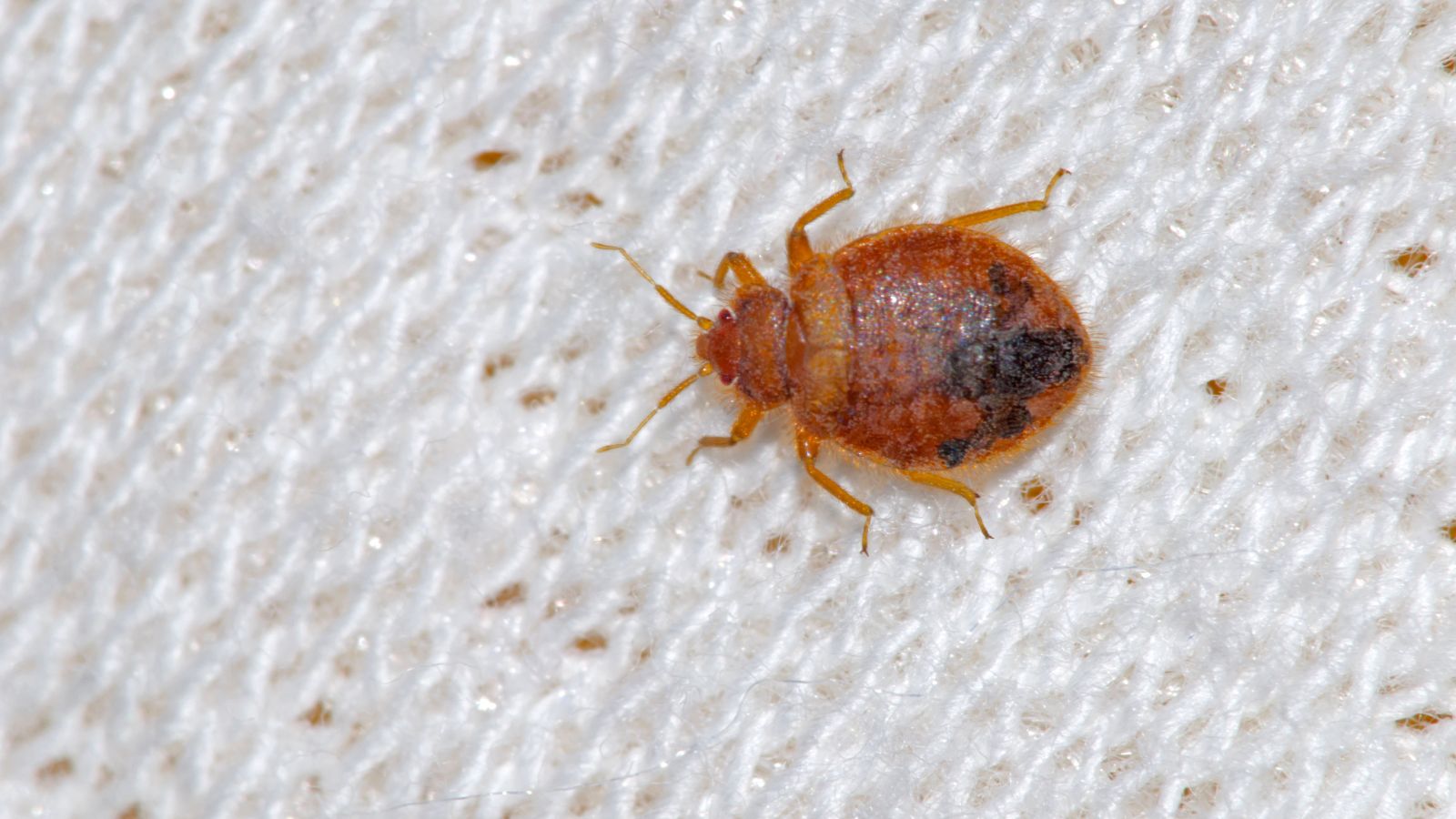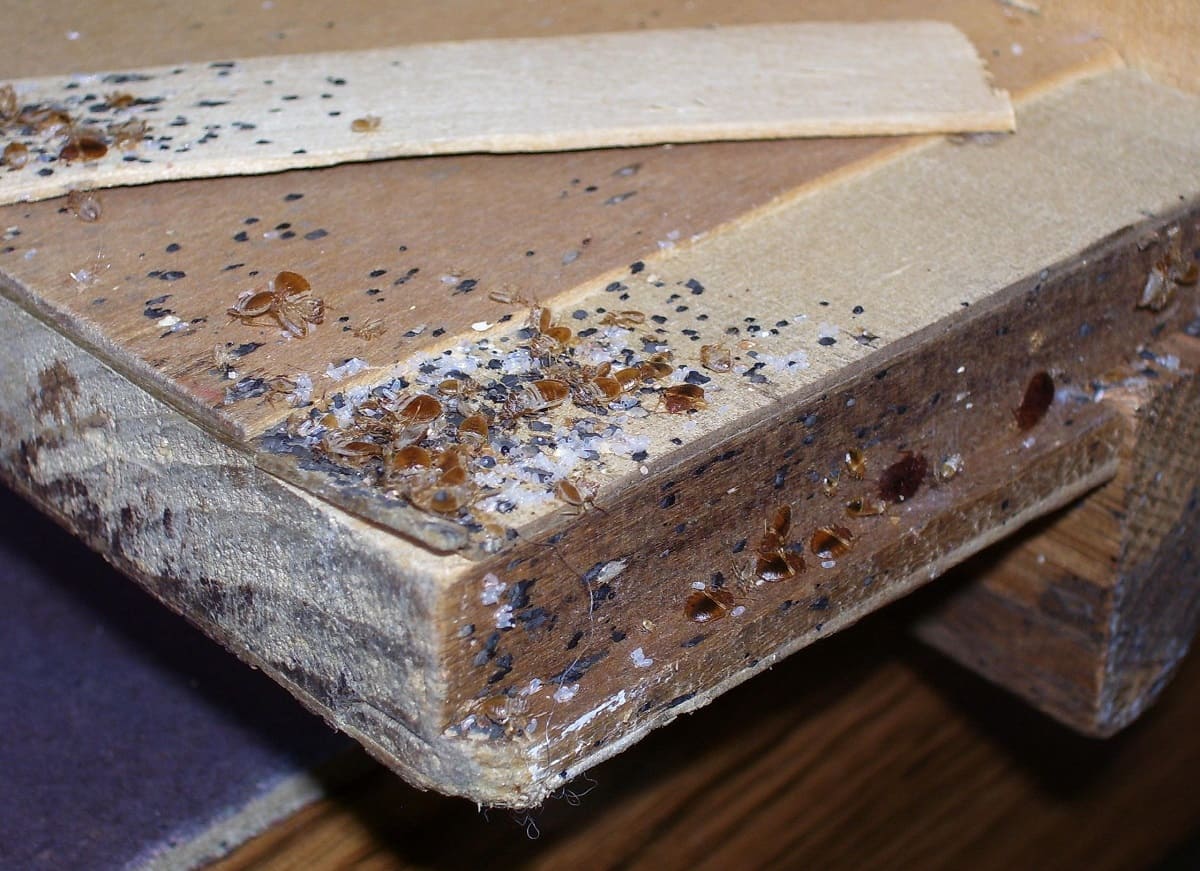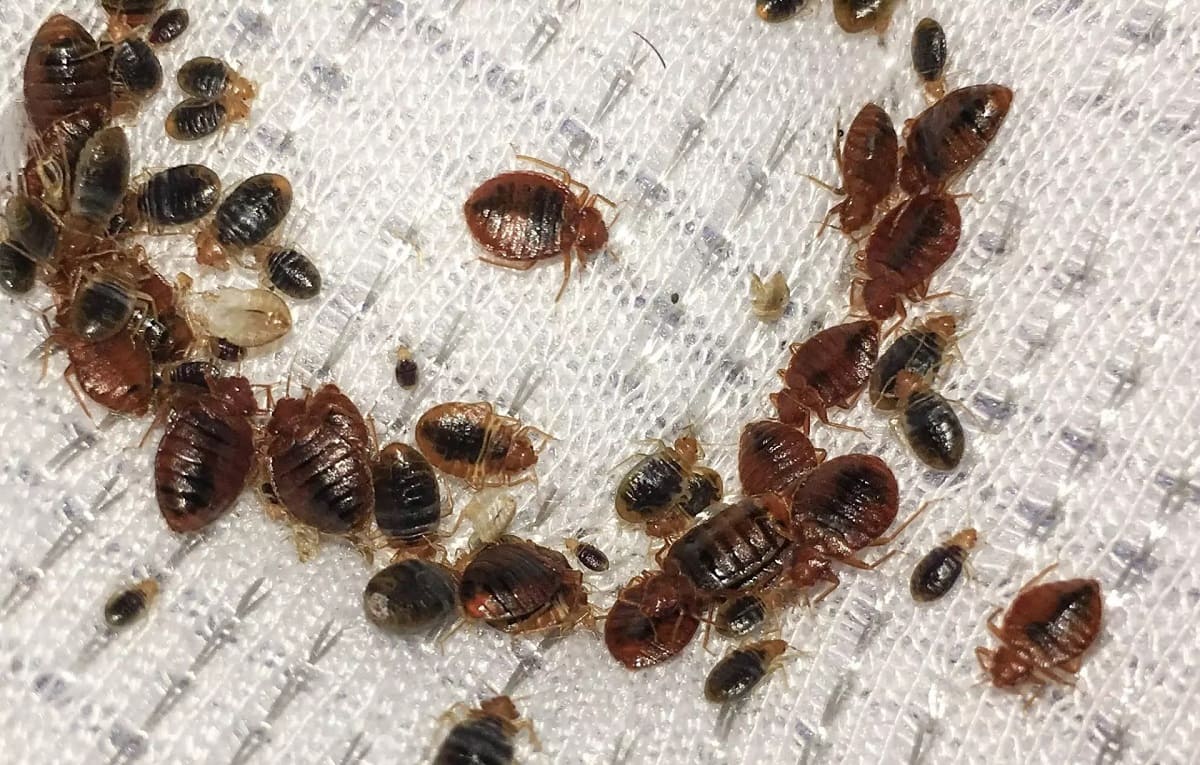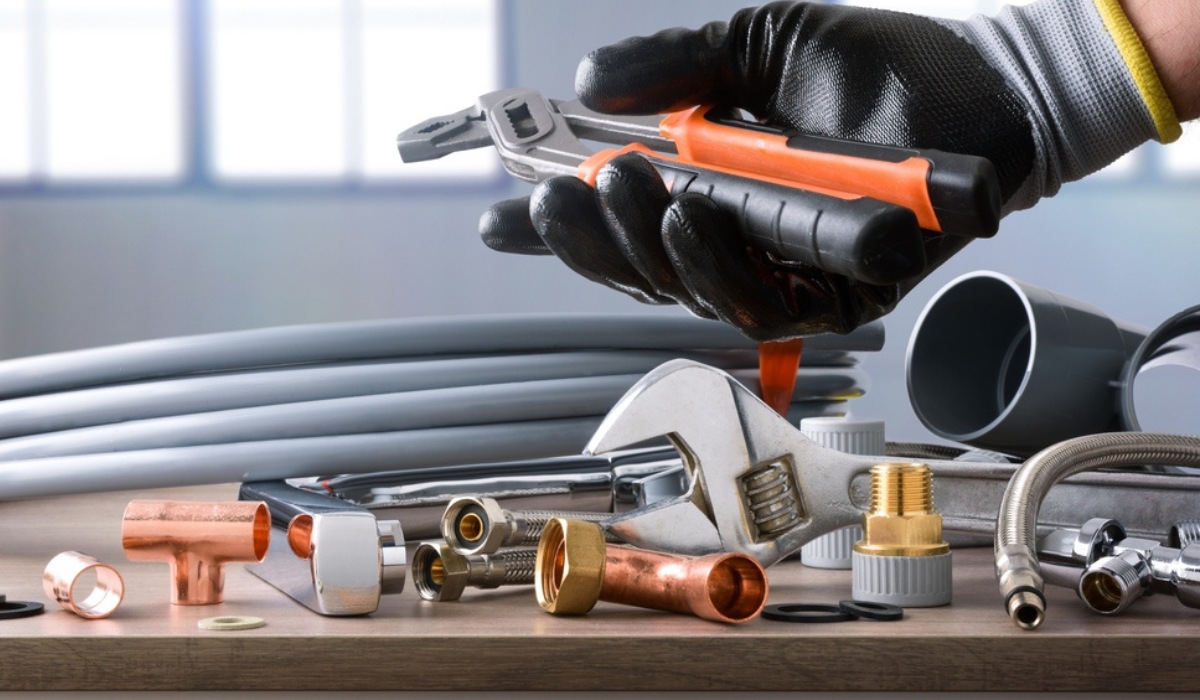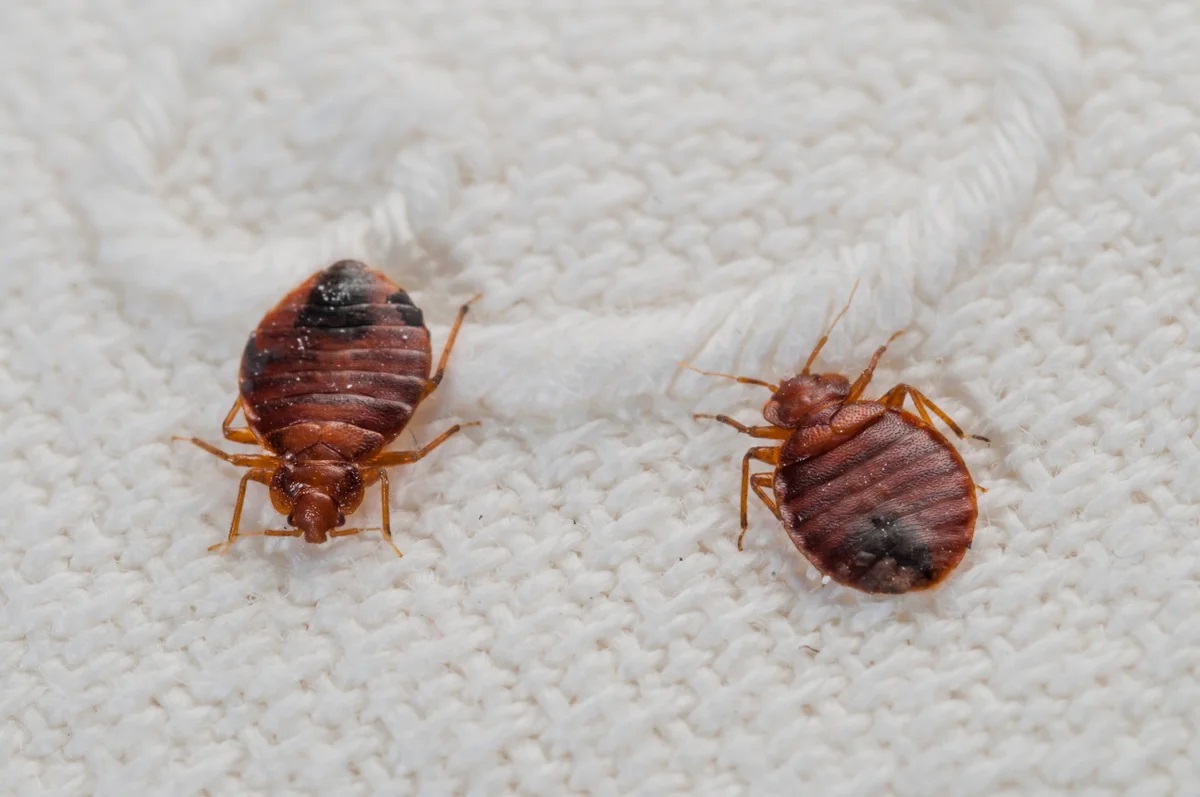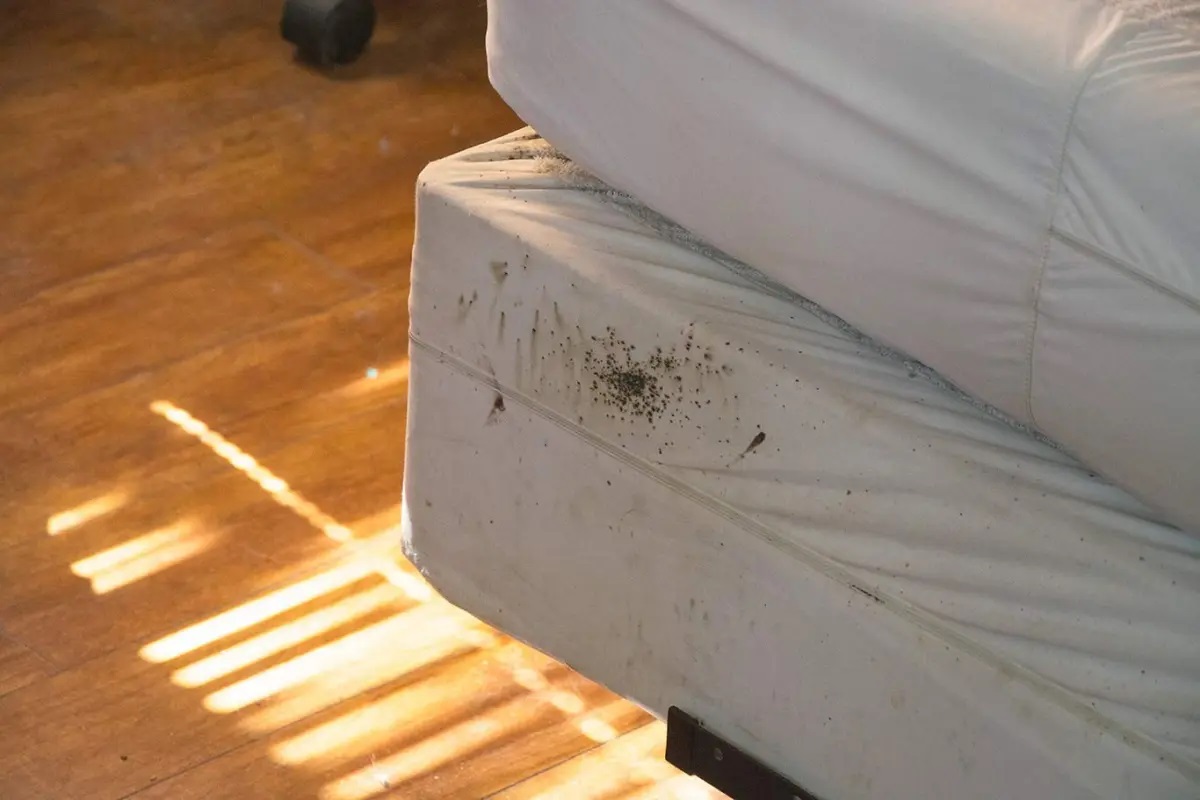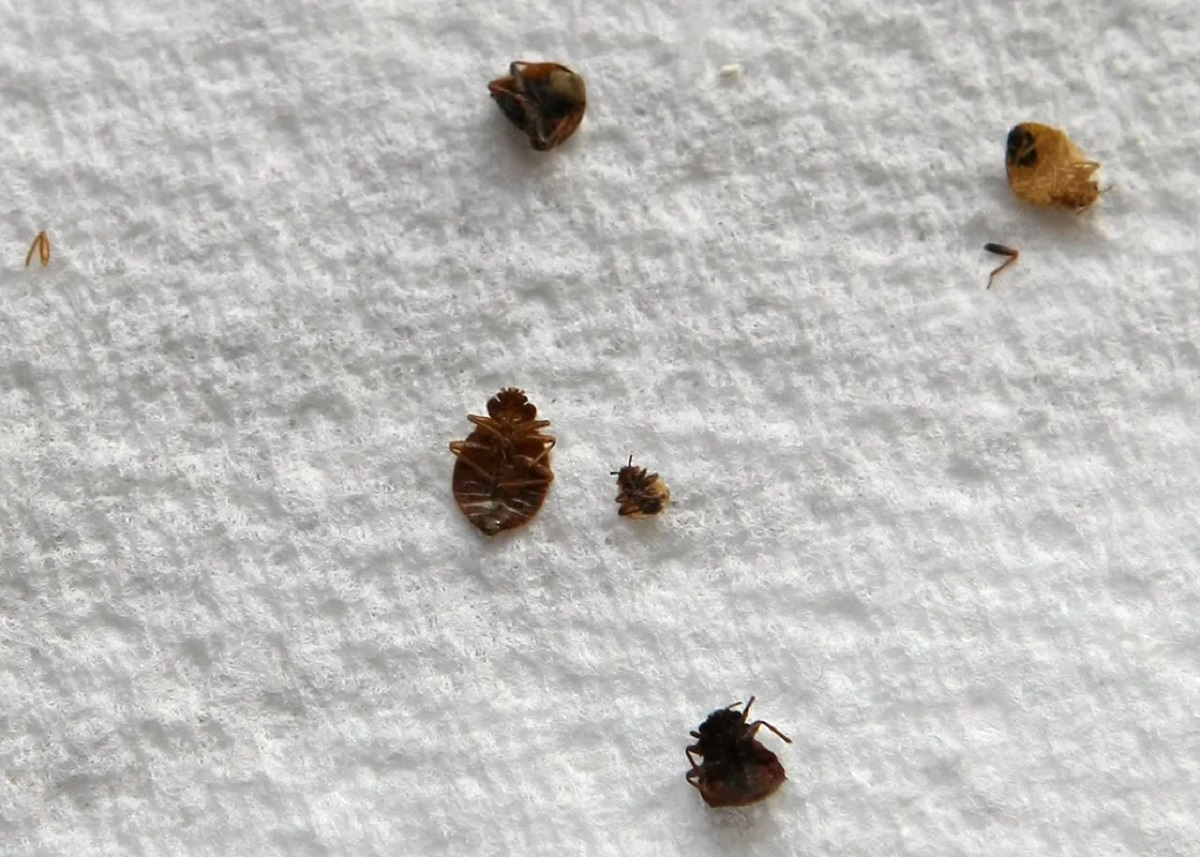Home>Furniture>Bedroom Furniture>How Long Does It Take To Notice Bed Bugs
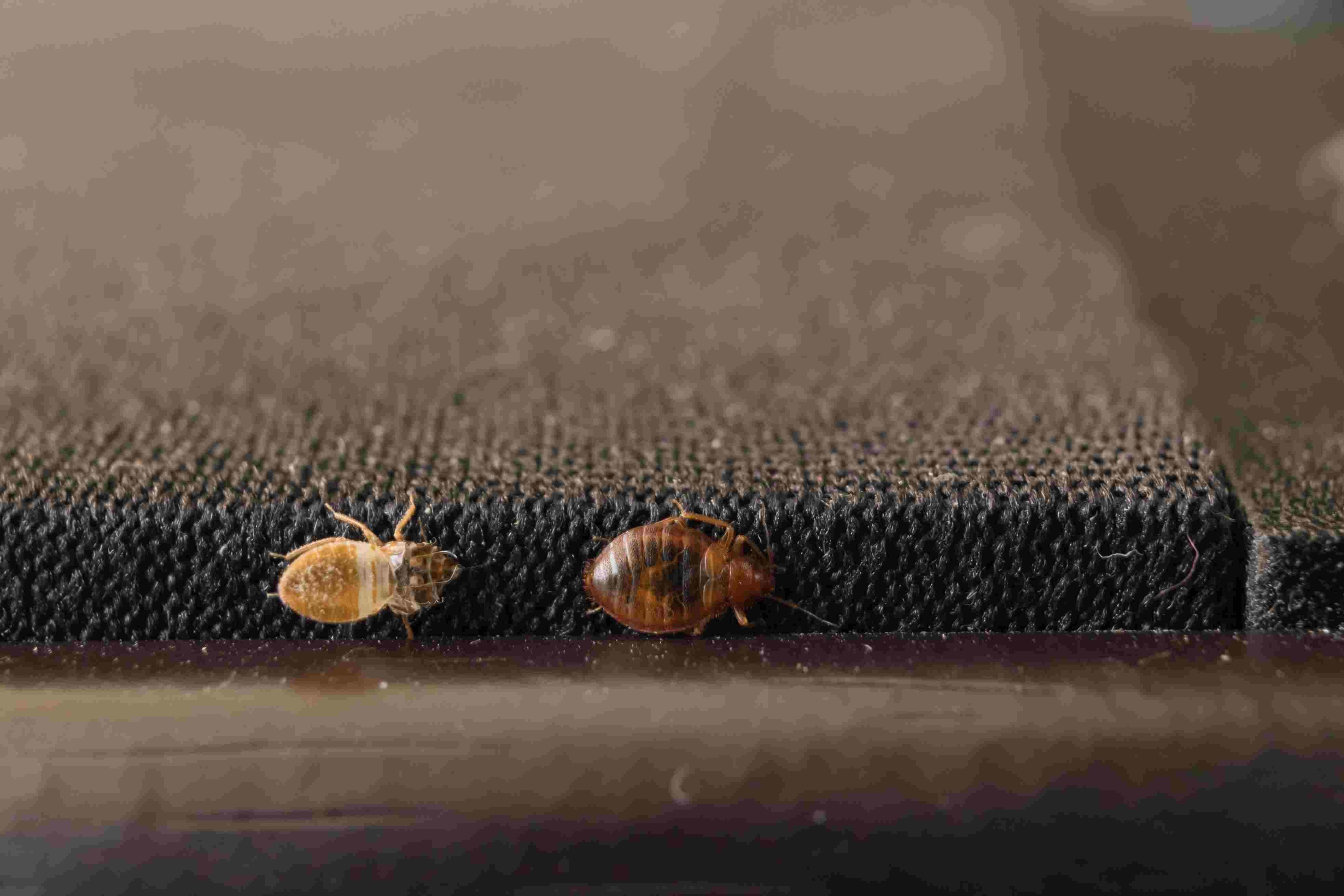

Bedroom Furniture
How Long Does It Take To Notice Bed Bugs
Modified: September 1, 2024
Discover how long it takes to detect bed bugs in your bedroom furniture. Protect your home with our expert tips and advice.
(Many of the links in this article redirect to a specific reviewed product. Your purchase of these products through affiliate links helps to generate commission for Storables.com, at no extra cost. Learn more)
Introduction
Welcome to our comprehensive guide on bed bugs – those pesky little insects that can disrupt your peaceful slumber. Whether you’re a homeowner, renter, or hotel guest, understanding the signs of a bed bug infestation and knowing how long it takes to notice them is crucial for effective eradication. Bed bugs are small, reddish-brown insects that feed on the blood of humans and animals, leaving behind itchy and irritating bites. They can infest any place where people frequent, such as homes, hotels, dormitories, and even public transportation.
Bed bug infestations have seen a resurgence in recent years, creating a significant challenge for homeowners and businesses alike. These tiny pests are adept at hiding in cracks and crevices, making detection difficult. In this article, we’ll explore the various signs of bed bug infestation and discuss the factors that can affect the time it takes to notice them. By the end, you’ll have a better understanding of how to identify and address a bed bug problem.
Key Takeaways:
- Detecting bed bugs early is crucial for effective eradication. Look out for signs like bites, stains, and shed skins. Professional inspections provide thorough and accurate assessments for effective treatment.
- Factors like infestation severity and visual awareness affect how quickly bed bugs are noticed. Regular visual inspections and monitoring devices can help, but professional inspections offer comprehensive assessments and treatment options.
Read more: How Long Does It Take For Bed Bugs To Starve
Understanding Bed Bugs
Before we dive into the signs of a bed bug infestation, it’s important to familiarize ourselves with these elusive pests. Bed bugs belong to the family Cimicidae and are scientifically known as Cimex lectularius. They are small, oval-shaped insects, about the size of an apple seed, and are primarily active at night.
Bed bugs are adept hitchhikers and can easily travel from one location to another by attaching themselves to luggage, clothing, or furniture. Contrary to popular belief, bed bugs are not solely found in beds or bedrooms. They can infest any area where people spend prolonged periods, such as living rooms, offices, and public transportation.
These resilient creatures have a lifespan of several months and can survive without feeding for up to a year. Bed bugs are attracted to the warmth and carbon dioxide emitted by humans, which is why they prefer to reside in close proximity to their hosts.
When looking for hiding spots during the day, bed bugs tend to congregate in cracks and crevices near sleeping areas. They can be found in mattress seams, headboards, bed frames, furniture, and even behind wallpaper. Their flat bodies allow them to fit into tight spaces, making them difficult to detect.
Understanding the lifecycle of bed bugs is essential in dealing with an infestation. A typical bed bug lifecycle consists of eggs, nymphs, and adults. Female bed bugs can lay hundreds of eggs in their lifetime, which are nearly invisible to the naked eye. These eggs hatch into smaller nymphs that gradually molt and grow into adult bed bugs.
Now that we have a basic understanding of bed bugs, let’s explore the signs that can help you identify their presence in your home or accommodation.
Signs of Bed Bug Infestation
Identifying the signs of a bed bug infestation is crucial in preventing their spread and minimizing the potential health risks associated with their presence. While bed bugs are notoriously good at hiding, they do leave behind some telltale signs that can alert you to their presence. Here are the most common signs to look out for:
- Bites and Skin Irritation: One of the first signs that you may have a bed bug problem is waking up with itchy, red, and irritated skin. Bed bug bites are usually in a clustered pattern and occur primarily on exposed areas of the body, such as the arms, legs, neck, and face. However, it’s important to note that not everyone reacts to bed bug bites, so relying solely on bites as an indicator may not be sufficient.
- Stains and Smears: Bed bugs leave behind dark, rust-colored stains on bedding, mattresses, and furniture. These stains are a result of their excrement, which contains digested blood. You may also notice smears or streaks on walls, fabrics, or other surfaces, which occur when bed bugs are crushed as they move around.
- Shed Skins: As bed bugs grow and mature, they shed their exoskeletons or skins. These discarded shells can often be found near infested areas, such as around mattress seams, in cracks, or on the floor. If you come across translucent and empty skins, it’s a strong indication of a bed bug infestation.
- Musty Odor: Bed bugs emit a distinctive musty scent, often described as a combination of coriander and almonds. If you notice an unpleasant and lingering odor in your bedroom or living area, it could be a sign of a significant bed bug population.
- Visible Bed Bugs: The most telling sign of a bed bug infestation is, of course, the presence of the bugs themselves. Adult bed bugs are about the size of an apple seed and have a flat, oval-shaped body. They are reddish-brown in color but may appear darker if they have recently fed. Keep in mind that bed bugs are excellent at hiding, so you are more likely to come across their signs rather than the bugs themselves.
Remember, the severity of the infestation may vary, and not all signs may be immediately apparent. If you notice several of these signs in your home or accommodation, it’s important to take immediate action to address the issue.
Factors Affecting Detection Time
The time it takes to notice a bed bug infestation can vary depending on several factors. Understanding these factors can help you gauge the urgency of addressing a potential problem and implementing appropriate control measures. Here are the main factors that can affect the detection time:
- Infestation Severity: The level of infestation plays a significant role in how quickly you may notice bed bugs. If the infestation is small or in the early stages, it may take longer for the signs to become apparent. On the other hand, a higher population of bed bugs will likely lead to more visible signs, making detection easier.
- Behavior and Feeding Patterns: Bed bugs are nocturnal creatures that prefer to come out at night to feed on human blood. They are skilled at avoiding detection and will retreat to their hiding spots during the day. If you’re a light sleeper or tend to wake up during the night, you may be more likely to notice bed bugs sooner than someone who sleeps soundly throughout the night.
- Frequency of Occupancy: The frequency at which a particular space is occupied can impact how quickly bed bugs are detected. For example, a residence that is frequented daily will have more opportunities for occupants to notice signs of bed bugs compared to a vacation home that is only used sporadically. Regular occupancy increases the chances of detecting bed bugs early on.
- Cleanliness and Clutter: Contrary to popular belief, bed bugs are not exclusive to dirty or unkempt spaces. However, clutter and a lack of regular cleaning can provide more hiding places for bed bugs, making it harder to identify an infestation. Additionally, clutter can make it difficult to perform thorough inspections and treatments, prolonging the detection time.
- Visual Awareness: Some individuals may naturally have a higher visual awareness, making it easier for them to spot signs of bed bugs. This could be due to past experiences, knowledge about bed bug appearance, or simply being more observant. On the other hand, individuals who are less visually aware may take longer to notice the signs of an infestation.
It’s important to remember that the presence of bed bugs is not indicative of uncleanliness or poor hygiene. Bed bugs are excellent hitchhikers, and they can infest even the cleanest of spaces. By considering these factors, you can better assess the situation and take appropriate action if you suspect a bed bug infestation.
Inspect your bedding, mattress seams, and furniture regularly for signs of bed bugs, such as dark spots or shed skins. Early detection can prevent a larger infestation.
Visual Inspection
A visual inspection is one of the primary methods for detecting bed bugs in your home or accommodation. While bed bugs are skilled at hiding in cracks and crevices, conducting a thorough visual inspection can help you identify their presence. Here’s a step-by-step guide to performing a visual inspection:
- Start with the Bed: Begin your inspection by thoroughly examining the mattress, box spring, and bed frame. Look for any signs of bed bugs, such as live bugs, molted skins, dark stains, or eggs. Pay close attention to the seams, creases, and tufts of the mattress, as well as the cracks and joints of the bed frame.
- Check Other Furniture: Bed bugs can also infest other furniture in the room, such as chairs, couches, and nightstands. Carefully inspect all seams, cracks, and cushions for any signs of bed bugs. Don’t forget to look behind and underneath furniture as well.
- Inspect Walls and Baseboards: Bed bugs can travel along walls to reach different areas of a room. Check for any cracks, crevices, or peeling wallpaper where bed bugs might hide. Examine baseboards, electrical outlets, and air vents, as bed bugs can squeeze into tiny spaces.
- Look for Signs on Fabrics: Bed bugs may leave behind stains or excrement on fabrics such as curtains, bedding, and upholstery. Inspect these items closely for any dark spots or smears. Pay attention to any unusual odors emanating from these fabrics as well.
- Search for Hiding Spots: Bed bugs are expert hiders and can tuck themselves away in various locations. Use a flashlight or magnifying glass to search for bed bugs in cracks, crevices, and other hiding spots. This includes behind picture frames, in electrical outlets, and inside alarm clocks.
Remember to take your time during the visual inspection and be thorough. Bed bugs can be difficult to spot, so it’s essential to check all potential hiding spots. If you encounter any signs of a bed bug infestation, it’s crucial to take appropriate measures for control and extermination.
Please note that conducting a visual inspection may not always guarantee 100% accuracy in detecting bed bugs. In some cases, a professional inspection may be required for a more comprehensive assessment of the situation.
Read more: How Long Does It Take Bed Bugs To Die
Monitoring Devices
Monitoring devices can be a valuable tool in detecting and monitoring bed bug infestations, especially when visual inspections alone may not be sufficient. These devices are designed to attract and capture bed bugs or indicate their presence. Here are some commonly used monitoring devices:
- Bed Bug Interceptors: Interceptors are small plastic devices that are placed under the legs of beds or furniture. They have outer walls that bed bugs can climb but can’t escape from. Interceptors capture bed bugs as they move towards the bed or furniture, helping to confirm their presence and monitor the severity of the infestation.
- Bed Bug Monitors: Monitors are designed to attract bed bugs and provide an indication of their activity. There are various types of bed bug monitors available, including pitfall traps, envelope-style monitors, and active monitors. These devices can be placed near sleeping areas or potential harborage areas to capture and detect bed bugs.
- Bed Bug Dogs: Specially trained dogs can be employed to detect the presence of bed bugs in a specific area or property. These dogs are highly skilled at sniffing out the scent of bed bugs and can identify infestations more accurately than human inspections. Bed bug dogs are often used in hotels, hospitals, and other large-scale establishments.
- Passive Monitors: Passive monitors are adhesive pads or traps that are placed in strategic locations where bed bugs are likely to travel. These monitors don’t actively attract bed bugs but rely on their natural movement patterns. When bed bugs come into contact with the sticky surface, they become trapped, providing evidence of their presence.
Using monitoring devices can help to detect bed bugs early on, before a full-blown infestation occurs. They can also be helpful for ongoing monitoring after treatment to ensure that the infestation has been properly eradicated. However, it’s important to note that monitoring devices are not foolproof and should be used in conjunction with other inspection methods for the most accurate assessment.
Consulting with a pest control professional can provide guidance on the most appropriate monitoring devices to use for your specific situation. They can also provide insights into proper placement and frequency of monitoring to maximize effectiveness.
Professional Inspection
While visual inspections and monitoring devices can be helpful in detecting bed bug infestations, sometimes a professional inspection is necessary for a more thorough and accurate assessment. Pest control professionals have the expertise and tools to identify even the most elusive signs of bed bugs. Here’s an overview of what you can expect from a professional inspection:
1. Knowledge and Experience: Pest control professionals are trained in identifying and dealing with various pests, including bed bugs. They have extensive knowledge of bed bug behavior, hiding spots, and signs of infestation. Their experience allows them to spot even the subtlest indications of a bed bug problem.
2. Comprehensive Inspection: A professional inspector will conduct a thorough inspection of your home or accommodation, covering all potential areas of infestation. They will carefully examine mattresses, furniture, cracks, crevices, and any other areas where bed bugs may hide. They will also inspect adjoining rooms or units, as bed bugs can easily travel between spaces.
3. Advanced Detection Tools: Pest control professionals often use specialized tools and equipment to aid in the detection of bed bugs. These may include infrared cameras, bed bug sniffing dogs, and other high-tech devices that can identify the presence of bed bugs more accurately. These tools can help pinpoint infested areas that may be difficult to detect during a visual inspection alone.
4. Documentation and Report: After the inspection, the professional will provide a detailed report that outlines their findings. The report may include photographs, descriptions of infested areas, and recommendations for treatment and prevention. This documentation can be valuable if you need to file insurance claims or provide evidence to landlords or property managers.
5. Treatment Recommendations: If bed bugs are confirmed, the pest control professional will discuss treatment options with you. They will provide guidance on the most effective methods for elimination, such as chemical treatments, heat treatment, or a combination of techniques. They will also advise you on necessary precautions and steps to take to prevent future infestations.
Hiring a professional inspector can give you peace of mind and ensure that the infestation is addressed promptly and effectively. They can provide professional guidance and expertise throughout the entire process, from inspection to treatment and prevention.
Keep in mind that professional inspections may come at a cost, but the investment is worth it for the accuracy and expertise that they provide. If you suspect a bed bug infestation, consider reaching out to a reputable pest control company for a professional inspection.
Conclusion
Bed bugs can be a persistent and frustrating nuisance, but with the right knowledge and vigilance, you can effectively detect and address infestations. Understanding the signs of a bed bug infestation is key to taking prompt action and preventing the problem from escalating. Whether you’re conducting a visual inspection, using monitoring devices, or seeking a professional inspection, the goal is to identify bed bugs early on and implement appropriate treatments.
Remember, bed bugs are skilled at hiding in cracks, crevices, and other inconspicuous areas. It may take time and effort to spot their presence, especially in the early stages of an infestation. By being vigilant and regularly checking for signs such as bites, stains, shed skins, or actual bed bugs, you can take proactive steps to address the issue before it becomes a bigger problem.
Factors such as infestation severity, behavior patterns of bed bugs, cleanliness, and one’s own visual awareness can affect how quickly bed bugs are detected. Being aware of these factors can help you gauge the urgency of addressing a potential bed bug problem and taking appropriate action.
Visual inspections and monitoring devices can be highly effective in detecting bed bugs, but professional inspections provide a more thorough and accurate assessment. Pest control professionals have the expertise, tools, and knowledge to identify signs of bed bug infestations that may be missed during a DIY inspection. They can offer treatment options and recommendations tailored to your specific situation, ensuring effective eradication and minimizing the chance of future infestations.
If you suspect a bed bug infestation, it’s important to take action immediately. Contact a professional pest control company for guidance and assistance. They can help you develop a comprehensive plan to eliminate bed bugs and provide advice on prevention to keep these pests at bay in the future.
Remember, early detection and prompt intervention are key to successfully combating bed bugs, allowing you to restore peace, comfort, and a good night’s sleep to your home or accommodation.
Frequently Asked Questions about How Long Does It Take To Notice Bed Bugs
Was this page helpful?
At Storables.com, we guarantee accurate and reliable information. Our content, validated by Expert Board Contributors, is crafted following stringent Editorial Policies. We're committed to providing you with well-researched, expert-backed insights for all your informational needs.
